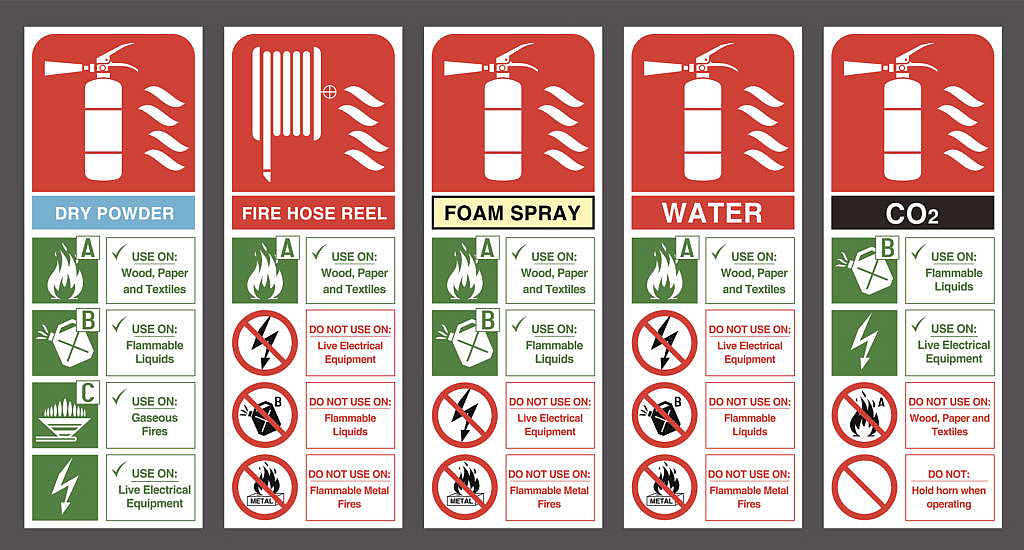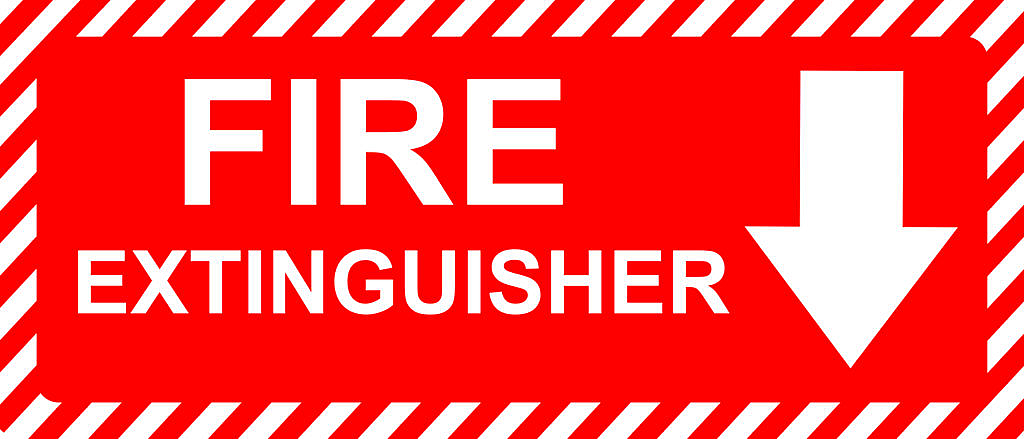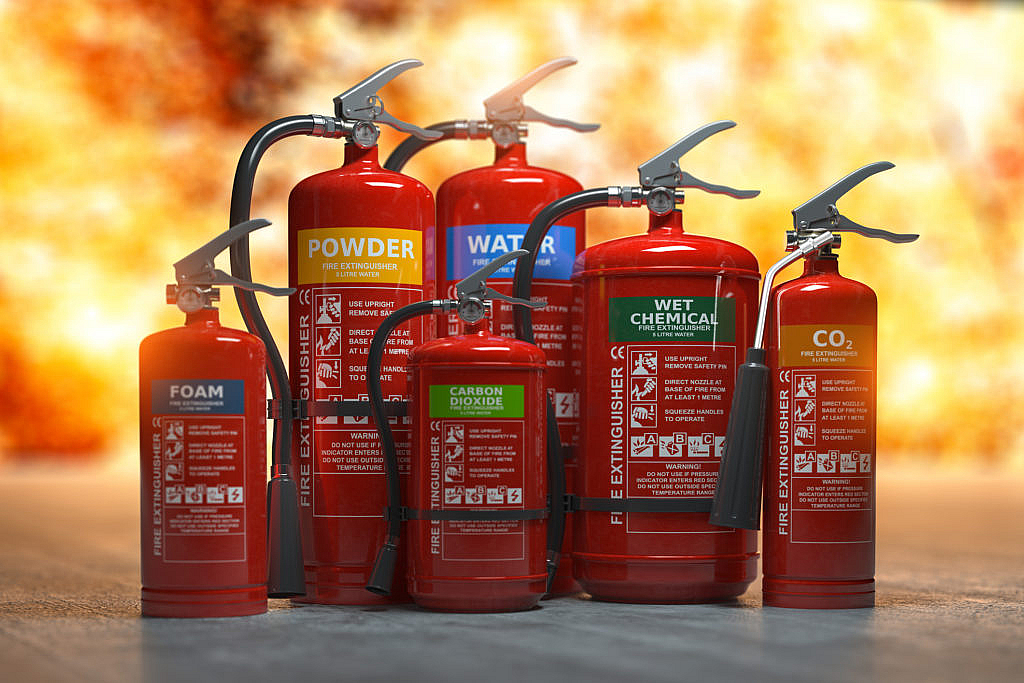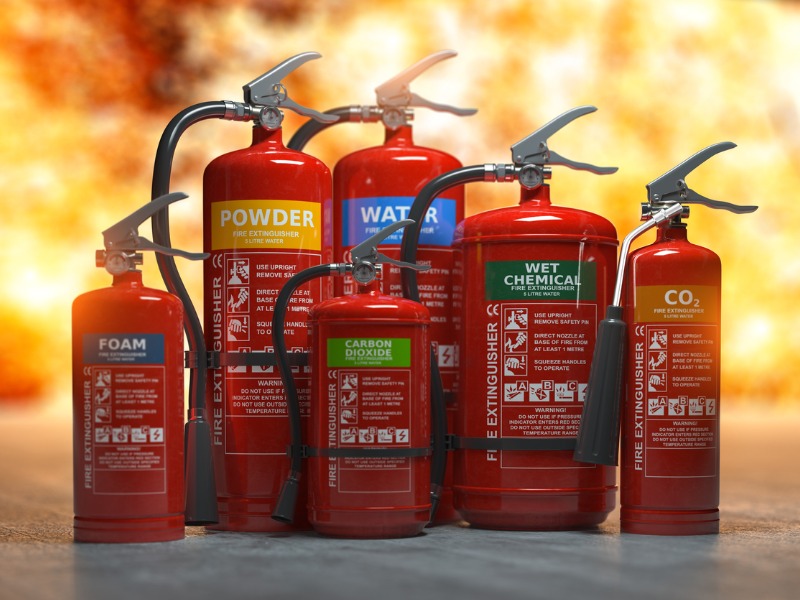Fire Extinguisher: Choosing the Right One
Choosing the correct kind of fire extinguishers on the worksite is an integral aspect of fire safety. So there are several types of portable fire extinguishers. They each use a different extinguishing agent to put out a fire. So there are five main fire classifications in the United States: A, B, C, D, and K. The type of flame that ignites will decide how specialized personnel react to put out the fire. So the type of extinguisher you will use will depend on the kind of flame that needs to be put out. The fire triangle consists of three elements, carbon, heat, and oxygen. When these three elements combine, the resulting chemical reaction will create a fire. The trick to extinguishing a fire is to destroy at least one of the fire’s components

Fire extinguishers get categories according to the kind of fire that they put out. So the labels they get are A, ABC, BC, D, or K. They indicate the kind of fire they combat. So all companies and employers need to train employees regarding fire extinguishers. All workers and employees should have information related to all types of fire extinguishers so that they may be prepared in case of an emergency. According to OSHA rules and guidelines, employees must have access to a Portable fire extinguisher at every office. So the most popular kind of portable fire extinguisher for use at work and home is the multi-purpose dry chemical fire extinguisher.
Every Construction Industry worker needs to learn about site safety hazards such as fire protection and electrical safety. By enrolling yourself in OSHA 30 Hour General Industry, you will get adequate knowledge about every aspect of the Construction Industry, including how to select Personal Protective Equipment (PPE) correctly.

Dry chemical fire extinguishers
Dry chemical extinguishers put out the fire by interfering with the fire triangle’s chemical reaction. So to put out a flame, this extinguishing agent forms a buffer between oxygen and gasoline. Dry chemical fire extinguishers (graded BC or ABC) extinguish two or three different classes of fire. So this makes them very handy. These multi-purpose extinguishers are usually red and weigh between five and twenty pounds. Since certain dry chemical fire extinguishers are only rated for Class B and C fires, it is critical to know which form (BC vs. ABC) is in the workplace.
Air-pressurized water (APW) fire extinguishers
Air-Pressurized Water (APW) extinguishers use water to put out fires. They do this by cooling the surface of the fuel and removing the heating part of the fire triangle. An APW extinguisher often contains both detergent and water to create foam. Some APW extinguishers contain water and pressurized air. They are massive silver canisters that stand at about 2 to 3 feet tall and weigh about 25 pounds when loaded.

Carbon dioxide Fire Extinguisher
Carbon dioxide fire extinguishers operate by eliminating the oxygen portion of the fire triangle as well as the heat with their extremely cold release. On Class B and C fires, a carbon dioxide formula may be used. Attempting to use a carbon dioxide fire extinguisher on a Class A fire is ineffective since the fire may begin to burn and has the ability to re-ignite after the extinguisher is turned off.
Wet Chemical Fire Extinguisher
The wet chemical fire extinguisher was designed for use in commercial kitchens to safely extinguish Class K flames. Wet chemical extinguishers act by cooling the burning oil and eliminating the heating portion of the fire triangle. Extinguishing agents, by forming a shield between the fuel and oxygen, aid in preventing re-ignition after the fire has been extinguished. Wet chemical extinguishers use a highly efficient spray to keep hot oil from splashing down on the individual. Any wet chemical can also be used on Class A fires, and the letters AK on the packaging mean that they can be used on both Class A and K fires.
Clean Agent Fire Extinguisher
The clean agent may be classified as multi-purpose BC or ABC to battle various forms of fires efficiently and cleanly. Clean agent fire extinguishers can be used in commercial facilities that have fragile or irreplaceable components and machinery that may be destroyed by a water, foam, carbon dioxide, or dry chemic fire extinguisher so it may not leave a trace upon evaporation.

Water Mist Fire Extinguisher
For sensitive or critical areas, a water mist is used as an alternative to a clean agent extinguisher, and most are rated for both Class A and Class C fires. The water mist extinguisher uses de-ionized water (which is non-conductive and non-toxic) to disperse water using a special spray nozzle, which releases the water in the form of a fine mist into the air. Water mist fire extinguishers operate by cooling the area and removing the fire triangle’s heat element. Water mist extinguishers, and the fact that they use water to extinguish a burn, do not inflict water loss or leave a trace.
Dry Powder Fire Extinguisher
A dry powder extinguisher puts out Class D or combustible metal burns. The dry powder fire extinguisher works by smothering the burning material with a dry powder extinguishing agent, separating it from oxygen, and removing the heat. Dry chemical fire extinguishers should not be mistaken for dry powder fire extinguishers (rated D). Using a dry chemical extinguisher on a Class D fire will either increase the fire’s strength or render it ineffective.

Conclusion
Now that you’re more educated, you should look at your property’s extinguishers and confirm you have the kind of extinguisher you’d like in the event of a fire at your specific facility. Keep in mind that various types of extinguishers can be needed in different areas of the facility. However, getting the right equipment is not enough. The right equipment can malfunction or be misused if it is not properly maintained or if your employees are not properly trained. It is important to check the expiry date of the fire extinguisher. For detailed fire extinguisher safety and awareness please visit Osha Outreach Courses. Getting the OSHA 30 card will make you capable and skilled enough to handle every difficulty in an industrial construction facility.




